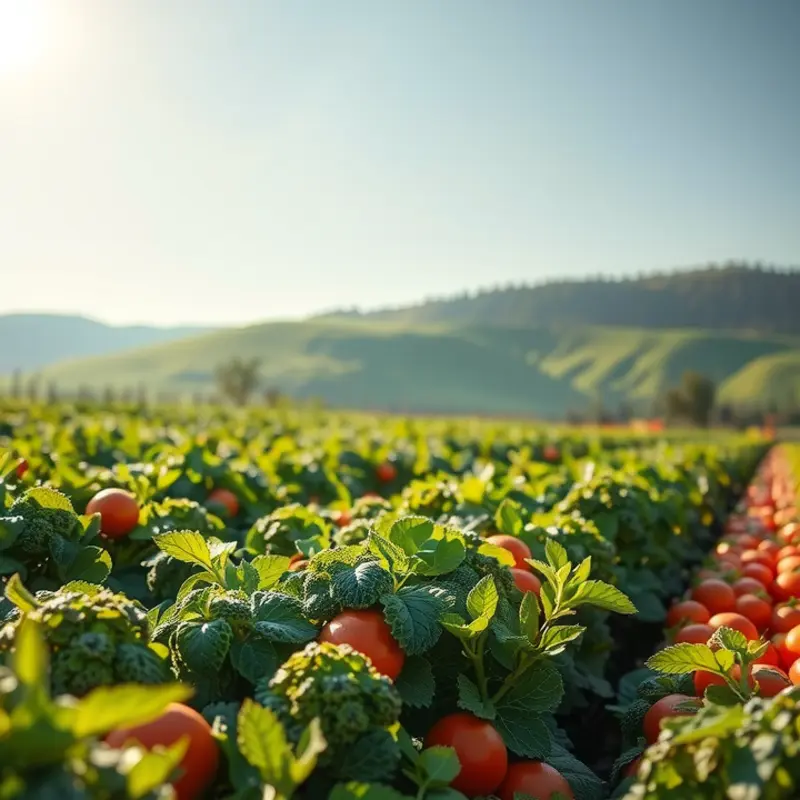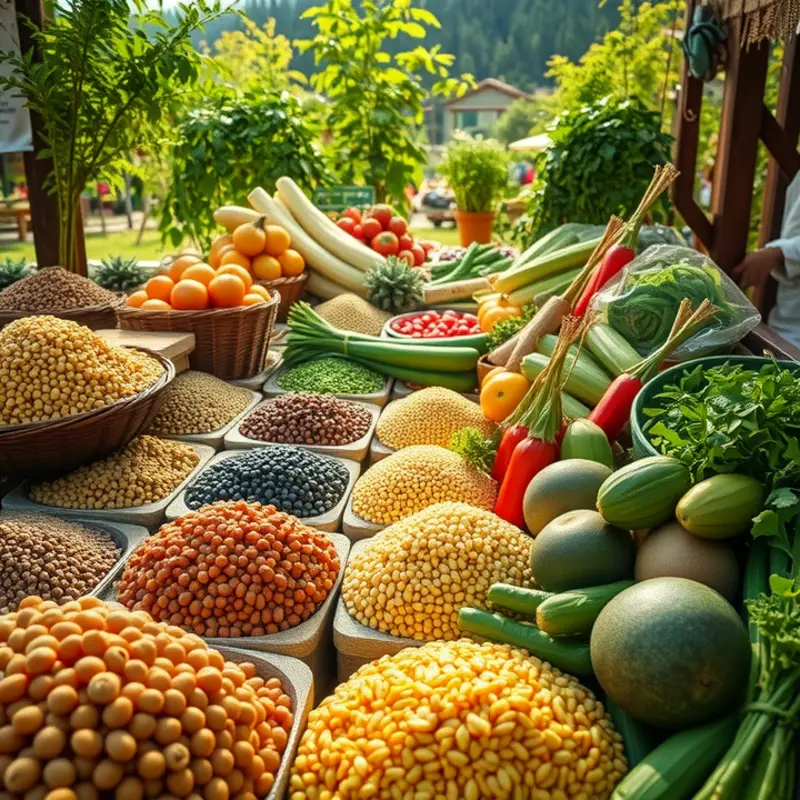As the call for sustainable living grows louder, many are turning to plant-based proteins as a crucial aspect of their eco-friendly diets. These proteins not only offer a multitude of health benefits but also significantly reduce our carbon footprint. Making the switch to plant-based proteins is a practical way to contribute to environmental stewardship while enjoying delicious, nutritious meals. This guide will illuminate the importance of incorporating these proteins into your diet and provide actionable steps to embrace a greener lifestyle.
The Unsung Hero: Understanding Plant-Based Proteins

Plant-based proteins are often underestimated in their nutritional potential and environmental benefits. They offer an incredible array of advantages for those who venture beyond traditional animal protein sources. When it comes to eco-friendly living, these proteins are invaluable.
Types and Sources of Plant-Based Proteins
A diverse variety of plants provide protein. Beans, lentils, chickpeas, and peas offer accessible and versatile protein options. These foods incorporate easily into most dishes. Whole grains like quinoa and buckwheat also contribute significant protein quantities. Additionally, seeds such as chia, hemp, and flax are rich in essential amino acids. Nuts, almonds, and walnuts are excellent protein sources that enhance both taste and texture.
Nutritional Advantages
Plant-based proteins come loaded with additional nutrients, such as fiber, vitamins, and minerals, contributing to overall nutritional adequacy. The fiber helps maintain healthy digestion and can support heart health. Unlike some animal proteins, plant proteins are generally low in saturated fats and free from cholesterol, aligning perfectly with heart-healthy dietary choices. For further insight into maintaining nutritional balance, explore our guide on nutritional adequacy.
Environmental Benefits
Switching to plant-based proteins can significantly reduce one’s carbon footprint. Producing plant proteins typically requires less water and land compared to animal proteins. For instance, legume production emits considerably less greenhouse gas compared to beef. This makes a plant-based diet not just a personal health choice but a planetary necessity. Furthermore, embracing plants heightens biodiversity as it generally entails less destruction of natural habitats.
Incorporating a variety of plant proteins into daily meals supports a balanced diet and promotes sustainability. A plant-powered lifestyle does not only enrich our health but also nurtures the earth. By understanding the multifaceted benefits of plant proteins, we take a significant step towards nourishing ourselves and the planet.
Crafting a Sustainable Plate: Easy Ways to Incorporate Plant-Based Proteins

Integrating plant-based proteins into your daily meals can be both satisfying and nourishing. It starts with a small shift in perspective, viewing meals not just as a necessity but as an opportunity to explore the delicious potential of plants.
Lentils and Legumes: Lentils are a powerhouse of protein and fiber, offering versatility in a variety of dishes. For a hearty meal, consider a warm lentil salad with roasted vegetables. Simply cook green or brown lentils until tender, then toss with roasted carrots, beets, and a drizzle of balsamic vinaigrette. The depth of flavors from slow-roasted veggies complements the earthiness of lentils beautifully.
Chickpeas are another staple that can transform your meal. Try a chickpea curry, spiced with cumin, coriander, and turmeric. Serve it over a bed of brown rice or quinoa for a complete protein profile. For those nights when time is tight, explore our minimal prep dinner ideas to streamline your plant-based cooking routine.
Grains that Pack a Punch: Quinoa, often referred to as a supergrain, is an excellent source of complete protein, meaning it contains all nine essential amino acids. It’s great in salads and bowls. A Mediterranean quinoa bowl with cherry tomatoes, cucumbers, olives, and a sprinkle of feta can be a refreshing dish that doesn’t compromise on protein.
Another grain to consider is farro. Incorporate it into soups or stews for a hearty addition. Farro’s nutty flavor and chewy texture add substance, keeping you full longer.
Meal Prep Strategies: Successful plant-based eating often comes down to preparation. Set aside time once a week to cook large batches of staples like quinoa, lentils, and beans. This prep work means you can easily assemble meals by adding fresh vegetables and a simple dressing or sauce. Consider freezing portioned-out servings for quick access later in the week.
Smart Substitutions: Transitioning doesn’t mean starting from scratch. Often, it’s about swapping similar ingredients. Replace ground meat in tacos with seasoned lentils or use mashed beans as a base for veggie burgers. These small changes can significantly decrease your carbon footprint and increase your intake of plant proteins.
Experimentation is key. Discover new flavors and combinations by trying different herbs and spices; this not only prevents monotony but also enhances the nutritional profile of your meals. Resources such as flavor guides can help you explore spices that pair well with plant-based proteins.
As you incorporate more plant-based proteins, you’ll find yourself exploring international cuisines that prominently feature legumes and grains. This not only enriches your meals but also broadens your culinary knowledge, supporting your journey to a more sustainable way of eating.
Transitioning to plant-based proteins is a rewarding experience that allows greater creativity in the kitchen. With these strategies, you’ll find meal preparation becomes a joyful and fulfilling part of your sustainable lifestyle.
Final words
Transitioning to plant-based proteins represents a powerful step we can each take towards a more sustainable future. Not only do these proteins provide essential nutrients and health benefits, but they also play a pivotal role in reducing greenhouse gas emissions and conserving water and land resources. By integrating diverse plant-based options into our diets, we not only nourish our bodies but also contribute to a healthier planet. Remember, every meal counts, and small changes can lead to significant impact. Embrace the plant-powered lifestyle and inspire others to join you in creating a sustainable world.








